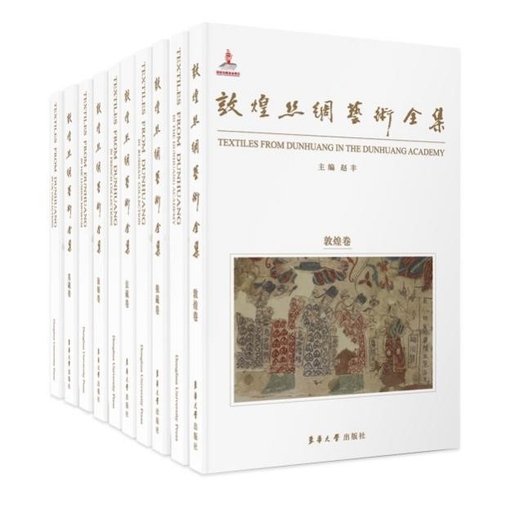Silk is the driving force behind the Silk Road. Situated along the Silk Road route is Dunhuang, a major town that has gathered rich unearthed silk artifacts. However, due to historical reasons, these silk heritage items, now distributed around the world, have never been systematically studied. With the cooperation of experts and scholars from cultural institutions around the world, Zhao Feng, professor of Donghua University and curator of the China National Silk Museum, led the Dunhuang silk research team over a period of 15 years to organize and systematically document the Dunhuang silk artifacts scattered around the world.
The result was the compilation of the Textiles from Dunhuang in the Dunhuang Academy collection, which will be formally released at the "Silk Road and Silk Art" Forum of Donghua University on 15 October. This work is financed by the National Publication Foundation and will fill in the gaps in the study of the silk heritage at Dunhuang Academy, and is fundamental to the research in the fields of the Silk Road, textile and apparel art history et cetera. The complete collection comprises of 10 volumes, including "English Collection Volume", "French Collection Volume", "Russian Collection Volume", "Lvshun Volume" and "Dunhuang Volume", and will be published in both Chinese and in English versions totaling millions of words and more than a thousand pictures.

When it comes to the question of how the systematic study of Dunhuang silk can have a large impact, almost all experts and scholars have mentioned one point: The sheer volume of physical relics and document comparison studies to be published for the first time will provide the significant historical context behind the integration and development of Eastern and Western cultures.

Due to cultural and technological barriers, the Dunhuang silk textiles that have found their way overseas for a hundred years since 1907 have remained almost unknown to the public. "Thanks to this research and published books, we can reproduce the complicated history of silk and silk production from a thousand years ago. It is these textile artifacts that can best serve as the symbol and origin of the name of the great Silk Road." Dr. Mikhail Piotrovsky, curator of the State Hermitage Museum, said, speaking highly of the research’s significance.
Dunhuang silk not only represents the pinnacle in the development of Chinese textile art, but also has a profound impact on the craftsmanship of later generations as a bridge between the past and the future. The publication of Textiles from Dunhuang in the Dunhuang Academy in both Chinese and English on the one hand provides rich and detailed new research materials for experts and scholars in related fields at home and abroad; on the other hand, it shows the cultural charm of Chinese silk to all readers, and promotes the exchange of Chinese and foreign cultures.


